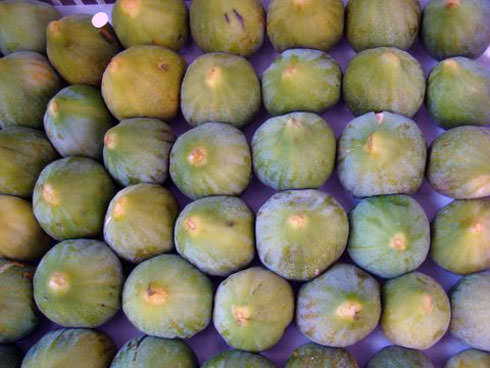

Figs are one of the oldest cultivated crops, so you’d think that we’d understand them pretty thoroughly by now. Ha! That just isn’t so. Figs can be one of the easiest tree fruits to grow, but also one of the most baffling.
Fig trees can produce two different types of fruits: The breba fruits are the ones produced on over-wintered wood. The other, main crop fruits are produced on new growth for the current year. Some varieties have both a breba and main crop (some have only one or the other), and almost all fig varieties display a confounding ability to do something surprising with their fruit production. I get the feeling that with global warming, we’ll see a lot of trees that didn’t use to produce breba crops start doing so. Unfortunately, the breba crops aren’t always tasty and sweet, and many breba figs are barely edible.
The next confusion for figs is the fact that identifying varieties by looking at the fruit and foliage is surprisingly difficult, and all varieties seem to take on unique characteristics once they are planted, so even a common variety, such as the Black Mission, can produce fruits and leaves dramatically different, depending on where it is planted. The fact that most varieties will simultaneously produce several different types of leaves doesn’t help with visual identification. I’ve been a horticultural consultant for decades and giggle at the thought of having to identify a fig in someone’s yard. In that case, I’d use historical nursery and neighbor information more than any visual information.
Fig collection can be great fun, because the branches root so easily over winter. If one sees a fig that has tasty fruit, a branch clipped from that tree can probably be made to take root, and because most figs are not grafted, the rooted cutting has a good chance of being able to be grown into a fruiting tree. Figs do like to produce fruit, and it’s not unusual to even see breba figs forming on cuttings that have been rooted over the winter.
Figs have a whole range of possible pest and fruit development problems, but the production of fruit is still pretty reliable. This is demonstrated by the fact that of all the pests that bother fig farmers, birds eating the ripe fruit are by far and away the worst pests. I always enjoy seeing when the birds start to eat the figs on my own tree. The birds leave the brebas alone, but then pounce heartily on the main crop when it ripens, so watching for the birds is how I can tell when our figs are ready to harvest.
Figs are durable plants, and can grow in cold areas if they are brought inside or wrapped up for the winter. Figs can also be grown in containers and pruned mercilessly to maintain a fruiting tree with fruit that can be easily reached.
The fun confusion with figs continues with the pollination question. Some figs are self-pollinating; Smyrna figs need a special wasp to enter the unfertilized figs in order to effect pollination, and other varieties will produce breba figs without any pollination but require wasps to pollinate their main crop. Okay, is that all clear now? Ha!




